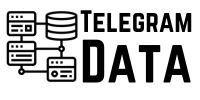Not every website visit has real business value. You can work day and night to attract people to your pages , but if they aren’t the right people with the right attitude, you won’t get any sales. That’s why smarter marketers focus less on traffic for traffic’s sake and instead focus on how to get the right kind of traffic at scale.
Most businesses use both search engines and social media to attract visitors with advertising campaigns, but these two channels are very different in nature.
When it comes to Google Ads, you can simply bid on high-intent keywords, such as “best deal for
,” and while this can be expensive depending on your industry, you’ll likely attract people who are willing to part with the checkout. The lead conversion rate can actually be pretty good through this method.But social media is a different beast
Most people don’t use social media to buy anything, but to stay connected and entertained with loved ones. Your ad is preventing them from finding the next funny meme or cat video. This makes it much harder to achieve the kind of conversion whatsapp group in iran rates you might see when bidding on high-intent keywords in search.
Businesses can amass large numbers of followers on their accounts without it actually leading to purchases. These viewers are simply there to enjoy the content while procrastinating at work or waiting for a bus. Still, there are ways to be smarter here and generate quality leads. It takes a little creativity and knowledge of the powerful tools available.
Use demographic information
It’s not uncommon for people to be surprised by who actually buys their products. The same goes for the people who engage with their posts. You may think you’re perfectly targeting one market, but find that a completely different audience is interested in buying.
Facebook pixel data is great for this . You can see the demographics of who is engaging with posts and which people are converting. You can use targeting data to create lookalike audiences made up of people similar to those who are already engaging with your site, increasing the likelihood that they will have purchase intent.
Growthcave did just this for one of its maximizing the value of facebook marketing clients and found a 44.84% increase in their Return on Advertising Spend (ROAS) .
An old trick marketers used to use was to buy ads targeted at people in regions of the world where clicks don’t cost as much, hoping that this would lead to higher overall engagement in the news feed. However, this technique is dying because it simply doesn’t bring in paying customers. Regardless, geographic targeting may not be the parameter that makes that much of a difference in your campaigns – it could be gender, age group, or a number of other options.
It’s best to keep an open mind and let the data be your guide. If you find that your highest converting customer isn’t the one you designed an ad for, that feedback can encourage you to create new ads for those people in the future, leading to more views from customers with high purchase intent over time.
Use the Facebook Ad Library
One key resource to turn to when creating high-intent campaigns is the Facebook Ad Library . For transparency, Facebook lets you see all the ads running on the platform and, for some, how well they’re performing. This is a fantastic way to learn from others’ experiments and save time.
One notable aspect is the ability to see the different versions of each of a competitor’s posts. This lets you see what they’re experimenting with, aero leads and by tracking over time, you can find out what options worked for them if they continue to use the same styles in the future. This applies to image style, but also to text and its tone. If there’s a noticeable shift where there were once ten versions of a post headline and then there’s only one, you can be pretty sure they’ve chosen the best path.

